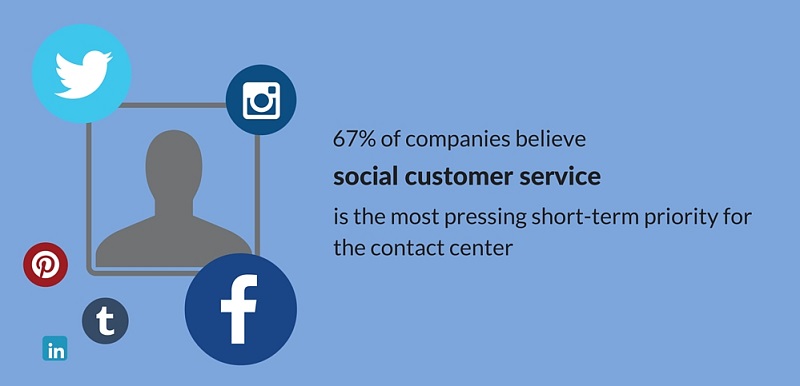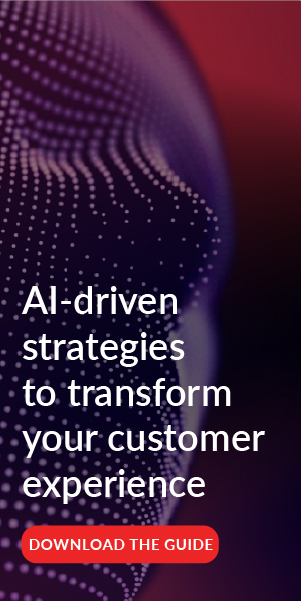How Facebook’s Recent Announcement Will Change Customer Experience for Retailers Forever

Fact: 67 percent of companies believe social customer service is the most pressing short-term priority for the contact center. After all, the number of customers who prefer to use social media rather than a telephone to contact brands is growing by the year, at 33 percent in 2012 (Neilsen). Thus it came as no surprise last year when Facebook announced several new features in Fall 2015 that pave the way for the shift to social CX, including a Facebook Messenger platform with built-in advertising, analytical insights, and quick-response badges (to initiate speedier replies from businesses). But last month Facebook shocked the world with yet another announcement: Facebook Messenger chatbots have finally arrived. Meaning, customer service response times are about to reach a record high.

For many, the chatbot option offers a great solution to a recently forged concern; Let’s face it, the quick-response badge has received mixed reviews on the business end. Without a human on deck at all times, the badges can be difficult to maintain. Especially when many businesses staff only one Social Media Manager (SMM) to cover all channels. For big business pages with little concern for the badge, staffing may not be an issue, but for small and local businesses, whose platforms depend largely on discovery traffic, maintaining the quick-response badge has proven to be especially difficult. But all of that is about to change.
The full series of updates not only hints at Facebook’s move toward commerce, but it also removes several steps which stood in the way between company and consumer. For instance, rather than:
-
Visit a company’s website
-
Locate the customer service page
-
Copy the phone number/address
-
Paste into an email or phone
-
State the problem
-
Wait for response
Consumers can now:
-
Send a message directly to a company through Facebook Messenger and receive an immediate response

We could very well be entering a new era of high-speed customer support.
Retailers will have noticed by now how often frustrated customers take to the social channels to complain, likely because it’s the second-best method of communication after face-to-face. Naturally in such situations consumers opt for customer service through Facebook Messenger over an automated phone call or email. After all, it is a form of contact many are most familiar with on a daily basis.
In every way, the new platform seems aligned for success -- but that success depends largely on two tiers.
- Communication -- on all ends: user, messenger, and business. Initial understanding depends on the consumer, who, one can hope, is literate enough to communicate their needs to the bot in a language it understands. If that’s not enough, Facebook Messenger chatbots are built to adapt and provide better answers to queries, with the help of AI, natural language processing, and human help. Finally, on the business side, a careful set of FAQ’s will need to be programmed into a company’s bot.
- Respect of privacy. Although chatbots are not a new technology, perhaps the greatest innovation lies in the concept of chatbots within social media messaging services, where humans spend so much of their personal time. Consumers don’t seem to mind the mix of crossing the platform with brands and personal contacts; After all, they often initiate the first interaction with business pages, if only to seek an outlet for frustration.
Herein lies the cause of the platform’s trend as a customer service go-to -- its quick-and-easy capacity to communicate easy-access complaints. However, what many consumers are finding, it is a two-way street. Businesses will be perhaps closer than ever to their customers’ immediate attention, and they will need to do so in a careful, respectable manner.
Already, consumers are reporting that the bots come across as buggy, or “spammy’ in some cases. To many Facebookers, the messenger service is a personal space, not to be bombarded with advertisements. Users have also reported difficulties when attempting to unsubscribe, and some report that, even after subscription list removal, they are still receiving promotions. These are rare cases, it seems, but they are noteworthy problems. It’s a double-edged sword, as the early stages of product launches often are. But it certainly seems like a step in the right direction.
Further opportunities exist if businesses add Facebook Messenger chatbot as a built-in API on their company websites. With a simple embedding code, your business could receive all of the benefits of a highly-efficient customer service algorithm with artificial intelligence. In fact, due to “natural language processing combined with human help,” as Zuckerburg announced in a April 12 panel, “people will be able to talk to Messenger bots just like they talk to friends.”
What does it all mean for the retail industry? With e-commerce in retail taking over a persistently annual 15 percent of the market from brick-and-mortar stores over the last several years, it’s hard to ignore the fact that the model is shifting to digital. For many, that digital storefront has extended all the way to social media, and businesses of all sizes will certainly reap the benefits from a more manageable customer service on social media platforms and beyond.

